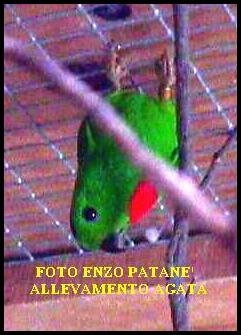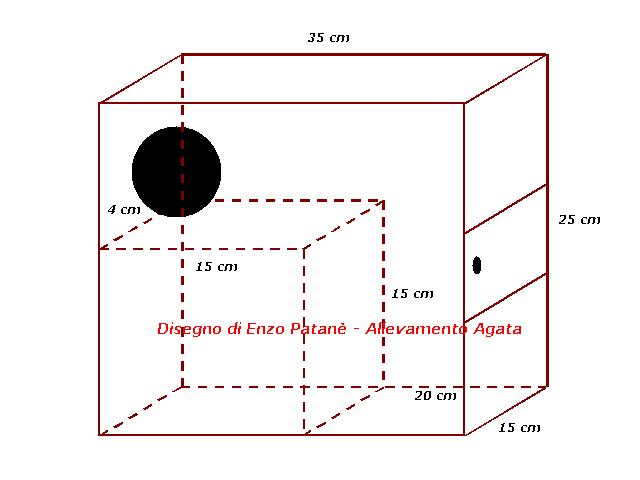LORICOLO FROM THE BLUE CROWN

Italian: Loricolo from the blue crown
English: Blue-crowned Hanging Parrot German: Blaukroenchen
Without doubt this loricolo the devout ones known and diffused between the representatives of just the kind in how much comes still widely imported and available of capture to an approachable price. Unfortunately this beautifulst representative of the sort Loriculus remains a raised parakeet little in Italy while in the Benelux the riproduttrici braces increase R-a.vista of eye.
As soon as imporato the subjects they are not the much sturdy also because of lack of adequate cures dategli from the importers and the traders who limit to propinargli apple and a p of nectar (when understood) but once acclimatized and very cured a enough sturdy subject is demonstrated.
The sexual dimorfismo the much marked in how much solo male extension the red chest and the yellow suule devout shoulders many intense that in the female.
Attention for perch normally the subjects imports to you is young and shows al livery della female, while year and means - two years and cio alla maturit sexual will only assume the definitive livery to one.
It must rimarcare that old females can show the red one on the chest but the colors are however all little shining of the males.
Length: 12 centimeters
Distribution: : South of Thailand, Malaysia, Singapore, Borneo, Sumatra and islands of Indonesia.
Natural diet: nectar, yields, buds, flowers, seeds and, probably, also bugs.
Breeding in nature: the period of breeding goes from January to July; the female transports pieces of fogle in the piume of gropponedentro the nest like the inseparable ones.
Feeding: Mainly frugivori they need of large quantit of fruit renewing giornalmente; to avoid of fornirgli only apple perch in the long run vitaminici lacks of balance are provoked.
I personally nutro my braces with one Macedonian of joined mixed fruit to bubbled carrots, verdure of season (cauliflower, zucchini, peas, onion, string beans, etc) the all reduced one to small pieces to which umisco of the bubbled rice.
To every part day I supply 150 cc of nectar for lori and one seed mixture for small parakeets without sunflower.
Weekly I supply some tarme of the flour (tenebrio molitor).
SUGGESTED BREEDINGS by MENANDPETS.COM
No breeding to signal
if you want to know like signaling yours,
contacts: marketing@inseparabile.it
Breeding in cattivit: My braces are lodged in cages of 100 x 50 x 50 supplies of branches of salice that create in an angle a small natural habitat and that the subjects are amused to rosicchiare. The frequent cage necessit of pulizia (also the posatoi) because of the type of liquid feeding and of I made much pain lethal infections.
English call the loricoli hanging-parrots and a name used in Italy pendolini, for the peculiar habit to this kind to rest hanging to head in gi.
For this reason it is necessary to avoid cages with roofs sluices (the walls instead go nolto well purch washable) and to prefer net roofs waves to avoid to subject to useless stresses the subjects.
Cararattere of these parakeets much cake and in the time becomes very confidenti, their little annoying back and, indeed, pu to even turn out melodioso.
They resist to minimal
temperatures of 15C, but they live better in atmospheres heats to
you to 20C at least during the winter.
The main reproduction
begins in December-January and therefore the breeding atmospheres
must very be illuminate in order at least 14 hours to you to the
day.
They place from 2 to 4 eggs, intervals of 24 hours and
begin to incubate from according to egg.
Incubation 18-21 days; the small are nourished in the nest, from the female imbeccata from the male, for four - six weeks and the young people that exit from the nest are normally independent after two weeks from the involo.

Nest:
In reproduced figure a cassette nest that personally I use. In realt they do not need of particular nests and they are reproduced also in horizontal nests from inseparable
we thank the breeding agate in order to have to us supplied this card